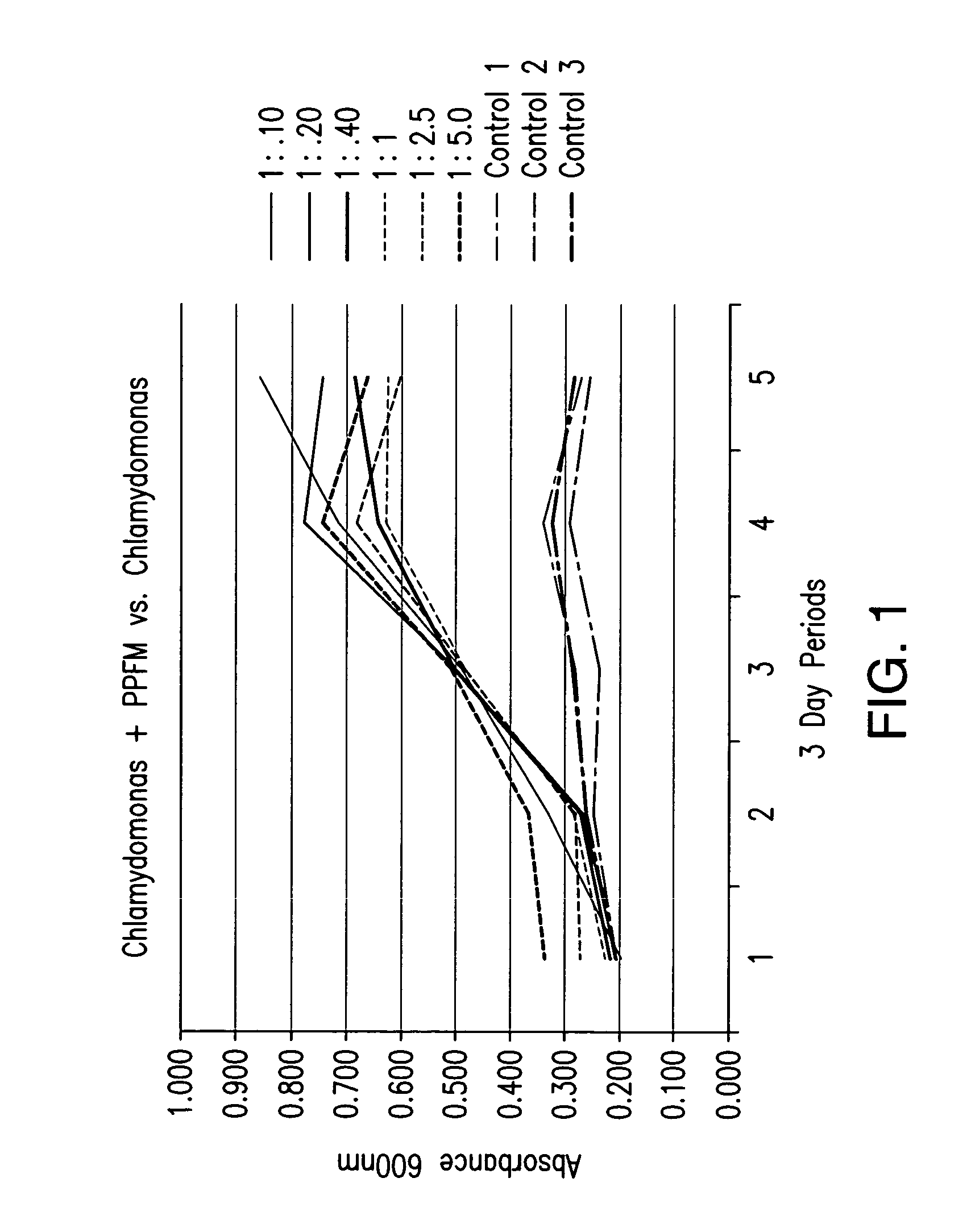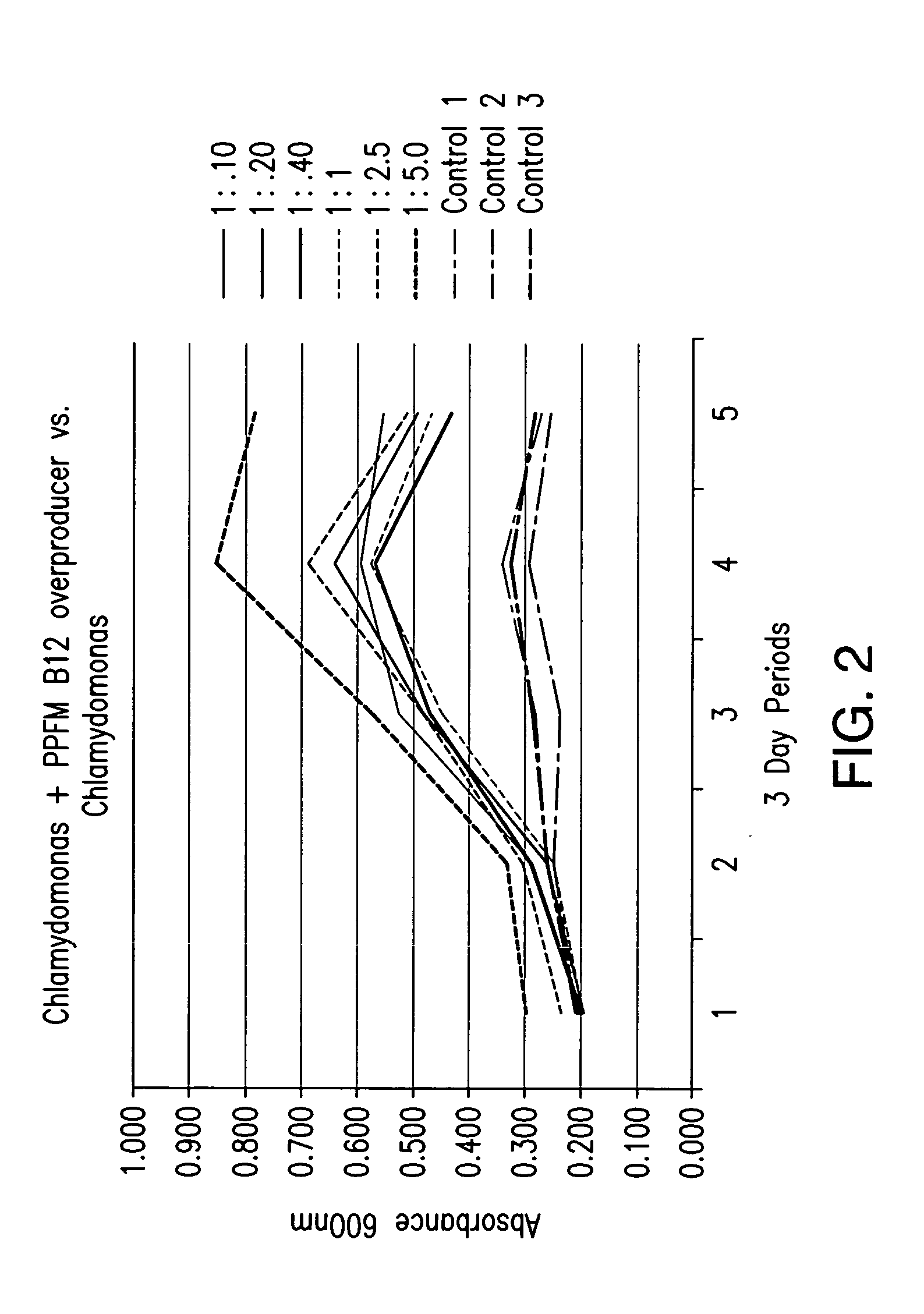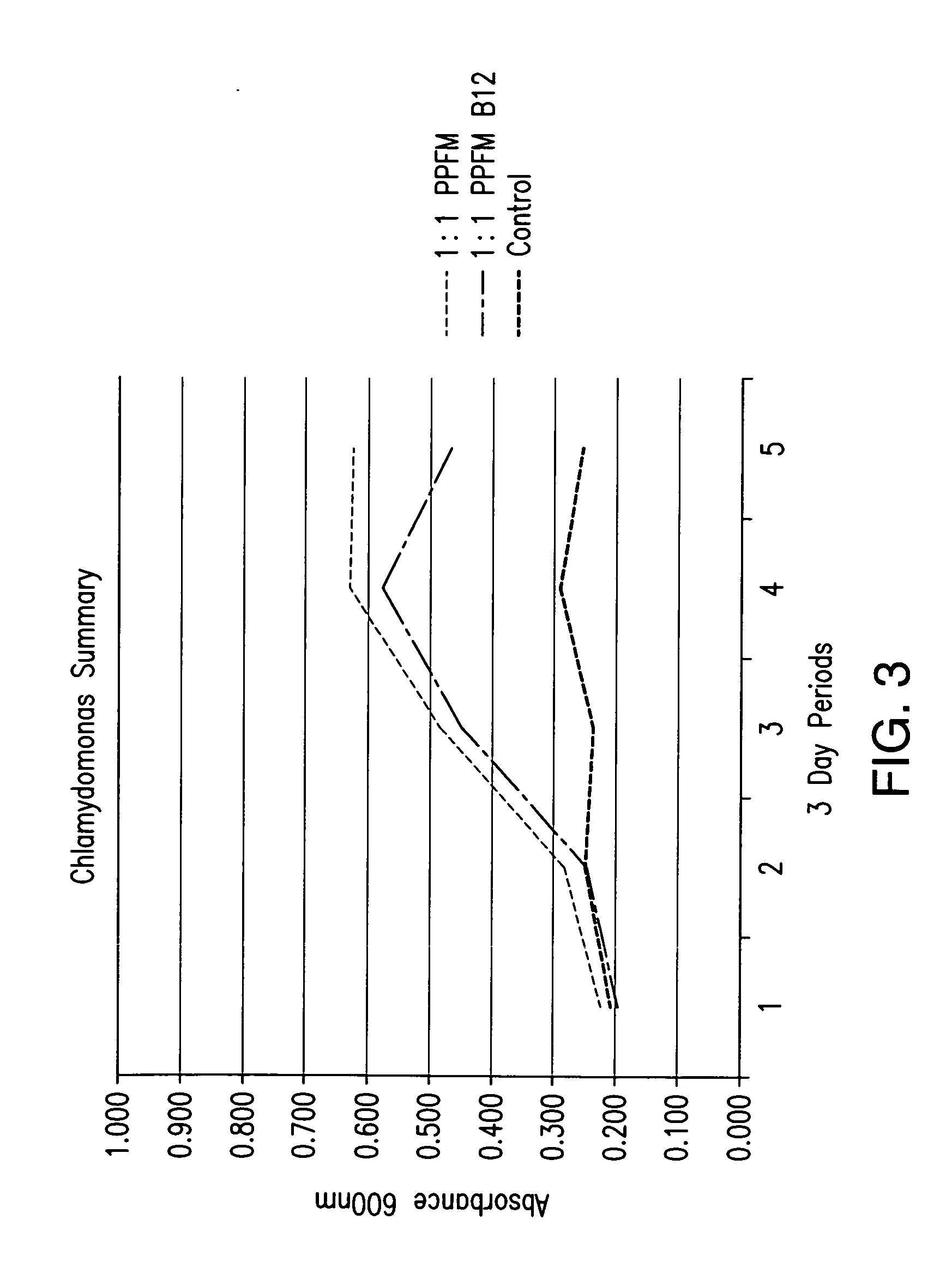Method for increasing algae growth and the use thereof in production of algae-derived biofuels and other chemical
a technology of algae growth and algae-derived biofuels, which is applied in the field of increasing algae growth and the use thereof in the production of algae-derived biofuels and other chemical, can solve the problems of food shortage, negative consequences, and consequent riots and consequences, and achieve the effect of increasing algae growth
- Summary
- Abstract
- Description
- Claims
- Application Information
AI Technical Summary
Benefits of technology
Problems solved by technology
Method used
Image
Examples
example 1
[0030]Liquid cultures were established in the laboratory from the algae specimens collected to include three experimental treatments, which were:
A control of Protococcus in water;[0031]1). Protococcus in water supplemented with 0.5% methanol, which is known to stimulate growth of PPFM bacteria; and[0032]2) Protococcus in water supplemented with a Vitamin B12 overproducing PPFM.
[0033]The growth of the cultures was monitored at Absorbance 550 nm with the results below in Table 2 being obtained:
TABLE 2Vitamin B12-A550 nm treatmentControlMethanolsecreting PPFMStart0.0730.0690.075After One Week0.0890.0940.145After Two Weeks 0.0680.0850.188
[0034]Clearly, a dramatic boost in growth is observed in algae cultures containing a vitamin B-12 overproducing PPFM.
[0035]The use of algae as a raw material for the production of neutral lipids, i.e., oil, is advantageous for many reasons.
[0036]First, the oil yield (L / ha) for algae, per land area required (ha), far surpasses such yields from other raw ...
example 2
[0039]Two types of algae, Chlamyodonas and Neochloris oleoabundans, were inoculated with varying amounts of a wild-type PPFM or with a PPFM B 12 overproducer. Growth of algae was measured over 15 days with a spectrophotometer. The results are illustrated in FIGS. 1-6.
[0040]The data from those two experiments show that (1) co-cultivation of Chlamyodonas with a PPFM vitamin B-12 overproducer or with a wild-type strain results in a greater yield of algae over a unit time period, i.e., faster growth and higher cell density; and that (2) co-cultivation of Neochloris oleoabundans with a wild-type PPFM strain results in a greater yield of algae over a unit time period.
[0041]Further, co-cultivation of Neochloris oleoabundans with the wild-type PPFM also increased the yield of neutral lipid from the algae. See FIG. 7.
[0042]As indicated above, use of PPFM bacteria shorten the time to algae harvest, while greatly increasing the number of algae cells harvested. See FIG. 8.
[0043]Although it is k...
PUM
| Property | Measurement | Unit |
|---|---|---|
| cell density | aaaaa | aaaaa |
| density | aaaaa | aaaaa |
| cultivation time | aaaaa | aaaaa |
Abstract
Description
Claims
Application Information
 Login to View More
Login to View More - R&D
- Intellectual Property
- Life Sciences
- Materials
- Tech Scout
- Unparalleled Data Quality
- Higher Quality Content
- 60% Fewer Hallucinations
Browse by: Latest US Patents, China's latest patents, Technical Efficacy Thesaurus, Application Domain, Technology Topic, Popular Technical Reports.
© 2025 PatSnap. All rights reserved.Legal|Privacy policy|Modern Slavery Act Transparency Statement|Sitemap|About US| Contact US: help@patsnap.com



